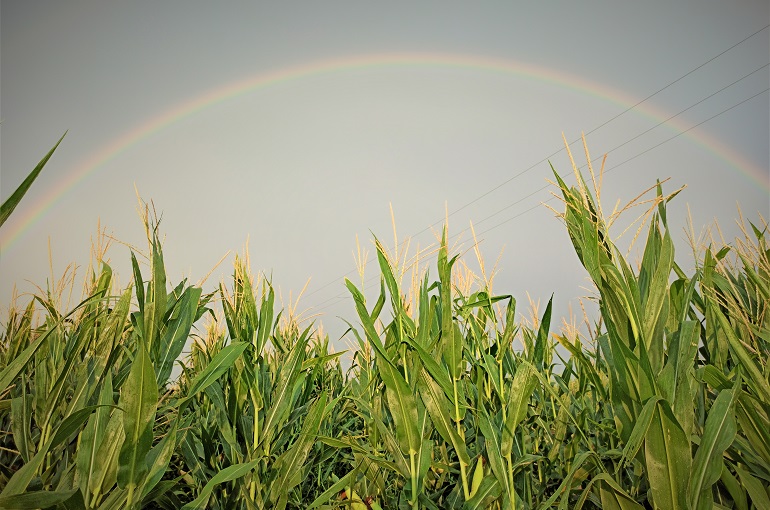Fast Facts and History of Maize

This post is also available in:
This post is also available in:
![]() Español (Spanish)
Español (Spanish) ![]() Français (French)
Français (French) ![]() Deutsch (German)
Deutsch (German) ![]() Nederlands (Dutch)
Nederlands (Dutch) ![]() हिन्दी (Hindi)
हिन्दी (Hindi) ![]() العربية (Arabic)
العربية (Arabic) ![]() Türkçe (Turkish)
Türkçe (Turkish) ![]() 简体中文 (Chinese (Simplified))
简体中文 (Chinese (Simplified)) ![]() Ελληνικά (Greek)
Ελληνικά (Greek) ![]() Português (Portuguese (Brazil))
Português (Portuguese (Brazil)) ![]() polski (Polish)
polski (Polish)
Fast Facts about Corn
- Corn is one of the most produced crops in the world
- Corn was domesticated in Mexico 7.000 years ago
- Christopher Columbus introduced Maize to Europe
- Inside an ear of corn, we find, on average, 800 kernels
- Corn is an annual grass
- The scientific name of corn is Zea mays
- The largest corn-producing country is the USA
- Some uses of corn are flour, cereals, livestock feed, beer, whiskey, syrups, biofuels, and others.
- Dent Corn is the most highly produced type of corn.
Maize is one of the most important crops for humanity. Nowadays, we utilize the majority of the cultivated corn for livestock feed production, and we use the rest for flour, cereal, beer, whiskey, syrups, biofuels production, and raw consumption. The plant was probably domesticated by humans 7000 years ago, and thus, today, thousands of different varieties of corn exist.
We classify the most commonly used Corn types into six main categories as follows:
- Dent Corn: This type of corn is the most produced (over 90% of corn production). We use it for feed production. The kernels of this type are dry and yellow.
- Flint Corn: We find this type of corn mainly in colder climates. It matures earlier than the other types and has smooth white to red kernels.
- Flour corn: This type is mainly grown in the USA for flour and beer production.
- Sweet corn: This type is mainly produced for raw consumption because of its sweet flavor. We also use it for syrups production. The kernels of this type are wrinkled and have white to yellowish colorations.
- Popcorn: This type of corn has small hard kernels, almost spherical, which explode at high temperatures, producing the popular snack.
- Wax corn: This type of corn is suitable for the production of starches.
Maize (Zea mays, Poaceae / Gramineae family) is considered one of the most important crops globally, with more than 7,000-10,000 years of cultivation (domestication of teosinte). The plant thrives in warmer climates with ample rainfalls, but it can adapt to various environments. In combination with its high yielding and starch content of the grains, this characteristic made it one of the most “successful” and more cultivated crops globally since we can find it in the fields of more than 160 countries. Sowing usually takes place in early-mid spring and harvest during late summer and fall.
Corn History
Corn in the wild was not as we know it today. Corn is believed to have been domesticated 7000 years ago in Mexico, and scientists have evidence that people in Peru used to grow corn almost 6.700 years ago. During the colonial period, Christopher Columbus introduced corn to Europeans.
Corn is an essential element of the daily diet of animals and humans. It is the main ingredient of various Mexican dishes and drinks, such as the famous tortillas. We use different corn types as raw materials for producing a great variety of products, such as flour, livestock feed, cereals, sweet syrups, beer, whiskey, biofuels, and others.
Fast Facts and History of Maize
Maize Nutritional Value and Health Benefits
Corn Plant Information and Production
How to Grow Corn for Profit – Maize growing guide
Principles for selecting the best maize variety
Maize Soil preparation, Soil requirements and Seeding requirements
Maize Water Requirements and Irrigation Systems
How to successfully control weeds in corn cultivation for higher yields








































































